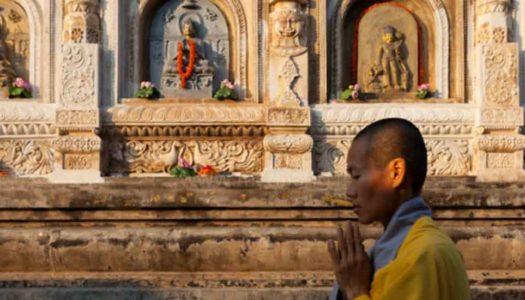Buddha Purnima is a very important festival for the Buddhist communities across the world. It marks the birthday of Siddharta Gautama who later came to be the renowned Gautama Buddha. The day is meant for self-reflection, meditation and tapping into the inner spiritual energy that can transform one’s life. Also, it is the best time for celebration, thanking the universe for sending someone like Buddha to lead us towards the right path.
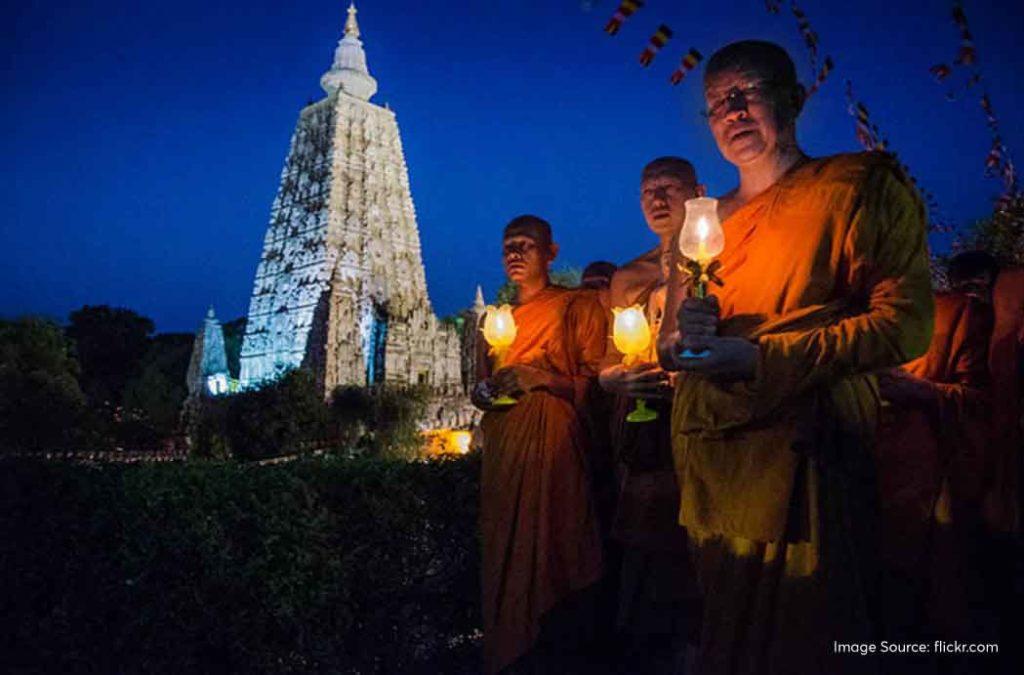
The special day is also popular as Buddha Jayanti and Vesak. It falls in the month of Vaisakhi on a full moon day according to the Buddhist lunar calendar and the Hindu calendar. This year, in 2024, it will be celebrated on 23rd May 2024. The tithi starts at 6:47 PM on 22nd May and ends at 7:22 PM on 23rd May.
Here’s everything you need to know about Buddha Purnima, its history, rituals and contemporary relevance.
Historical context of Buddha Purnima
There are no sure-shot records of Buddha’s birth and passing. However, people believe that he was born, attained enlightenment and passed on the same day – on Buddha Purnima.
Siddharta Gautama was born around 563 BC in Lumbini, Nepal. He was the son of King Suddhodana and Queen Maya. He lost his mother shortly after his birth and his father pampered him with all the luxuries of the palace. He was shielded from the harsh realities of life and everything he needed or wanted appeared in front of him within moments. Siddharta always had a sense of discontent and to overcome that, he ventured out of the palace at the age of 29. When he wandered around his kingdom, he came across an old man, a sick man, dead corpse and wandering ascetics. This opened his eyes to the cycle of life, old age, financial struggles and human hurdles.
He soon became determined to find the solutions to life’s struggles. He embarked on a spiritual journey and sought out several teachers and intellectuals. He also limited himself to strict ascetic practices. This only seemed to drain his energy and weaken his body. He quickly reached a middle path – neither being addicted to luxury nor subjecting himself to extreme asceticism.
When he was 35 years old, he reached Bodh Gaya in Bihar on a full moon night, sat under a Bodhi tree and entered a state of deep meditation. This is where he attained enlightenment and became ‘Buddha’ – the awakened one. He understood the cycle of life, the importance of karma, samsara and how to break one’s self from the karmic cycle of birth, death and rebirth.
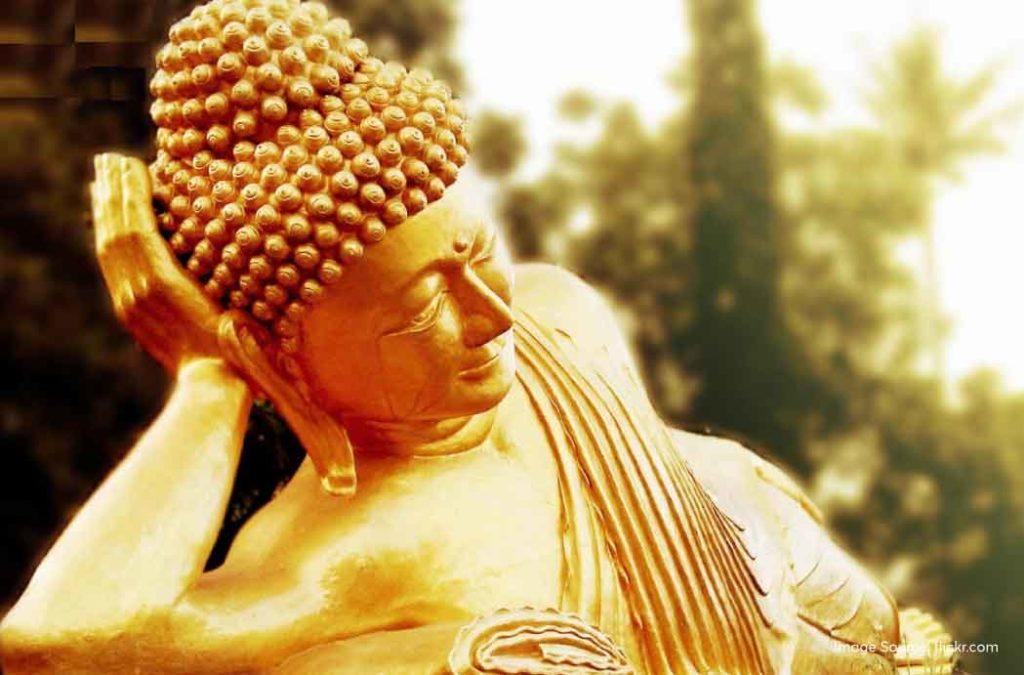
For several decades after that, Buddha travelled to different parts of the world and taught people what he had learnt during the Enlightenment. These discourses and sutras are now the foundation of Buddhism.
At the age of 80, in Kushinagar, Uttar Pradesh, India, Buddha entered Mahaparanirvana – the final passing away while attaining salvation.
Mahaparanirvana is attained when a man has completed his karmic responsibilities and it is time for his physical body to die. There are no more rebirths and the soul has reached the state of eternal bliss and peace.
Buddha’s preachings became the guidelines for effective living and spirituality. Not only in India, people from across the world including countries like Nepal, Bhutan, Myanmar, Sri Lanka, Indonesia, Malaysia, China and Japan among other places follow Buddhism and stay true to Gautama Buddha’s principles.
If you want to reach Bodh Gaya on this Buddha Purnima, you can travel to Patna, check into Hotels in Patna and relax for a while. Then, you will easily find buses or rail transport directly to Bodh Gaya.
Celebrations of Buddha Purnima
Many countries declare Buddha Purnima as a national holiday. The practice is also prevalent in India. There are four main things that the devotees do – indulge in meditation, read the sutras, offer prayers to Buddha and spend time doing acts of kindness. On Buddha Purnima, Indians who follow Buddhism go to the Viharas (monasteries) and spend the whole day observing Buddhist Sutras. They offer special prayers and water to the Bodhi tree. This is considered very auspicious.
At the Mahabodhi temple in Bodh Gaya, Buddha Purnima is celebrated with great vigour and enthusiasm. The whole place is decorated with lanterns, diyas, coloured papers, and Buddhist flags. The monks conduct special prayers and meditations on the day. People from different parts of the world come here to meditate under the same tree where Buddha attained enlightenment.
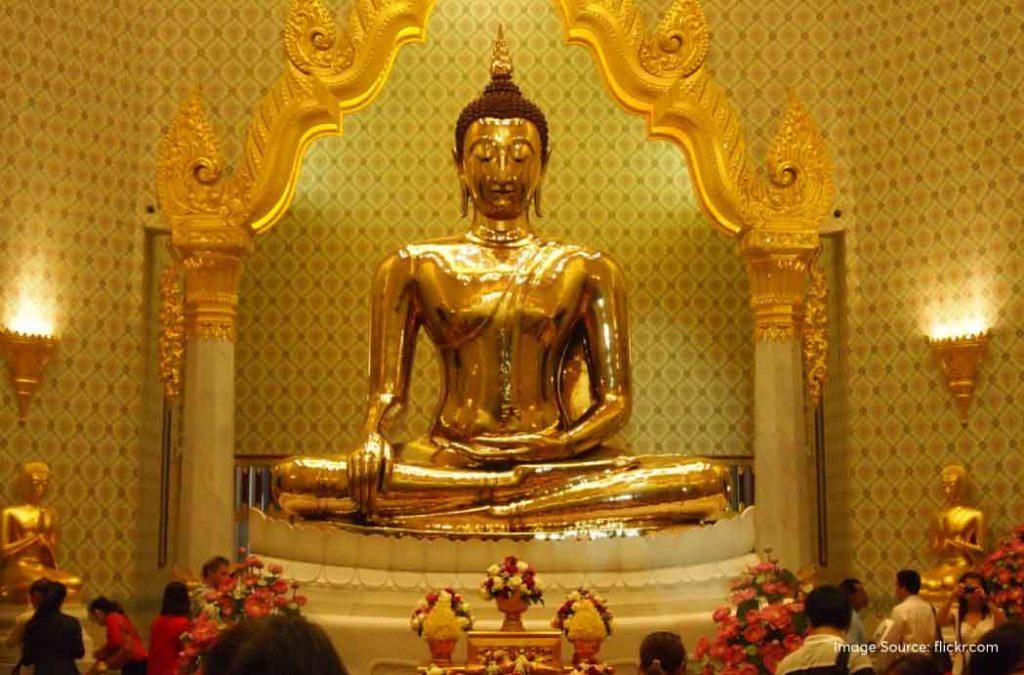
However, things are a little different in Theravada Buddhism. These devotees deck up in new, white clothes while other Buddhists do not follow any specific dress code. In Theravada Buddhism, they also cook Kheer and share it with friends and family. It is to commemorate the time when Sujata, a maiden, offered milk porridge to Buddha.
In the National Museum of Delhi, Lord Buddha’s holy remains are made open for public viewing on Buddha Purnima.
Here are some of the special celebrations in other countries –
- In Indonesia, a special spiritual procession starts from Mendut in Java and ends at Borobudur, which is the largest Buddhist temple in the world.
- In Japan, Buddha Purnima is also celebrated as the flower festival – Hanamatsuri.
- In Myanmar, music and dance are also included in the celebration of Buddha Purnima.
- In Nepal, the people of the Shakya clan (Buddha’s clan) celebrate the day with great fervour, with offerings, music, celebratory dance and cooking kheer.
- In the Philippines, irrespective of their religious beliefs, everyone comes together on Buddha Purnima to bathe the idols and offer their prayers.
Rituals and traditions of Buddha Purnima
Bathing the Buddha
Devotees take either the idols or images of Buddha and bathe them in milk or scented water. This signifies the purification of the physical body and mind. While bathing the Buddha, they usually orally chant their prayers.
Religious offerings
Devotees dress up in clean and new clothes and go to the nearest Buddhist temples, shrines and monasteries. This is where they make offerings like flowers, incense sticks, candles, fruits and milk. These offerings symbolise the importance of sharing and generosity that humans should always remember.
Lanterns
People light lanterns and hand them at the doorstep of their houses. In some countries, they also release them into the sky. These lanterns signify the light that wisdom and knowledge bring into our lives. It is an act of driving away darkness and ignorance.
Sutra recitations
Buddhists gather at temples and monasteries to recite the Buddhist sutras. The sutras are the scriptures which are believed to be the actual preachings and lessons from Gautama Buddha. On Buddha Purnima, you can find mass sutra recitations in Bodh Gaya and Kushinagar in India.
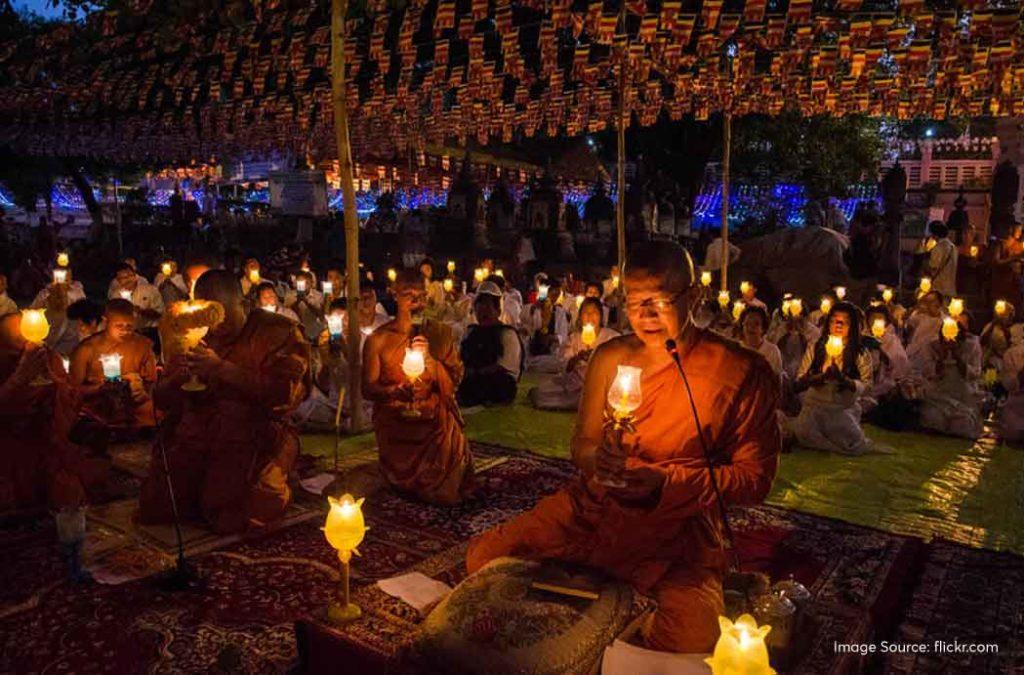
Alms are distributed
Giving alms is a common practice on Buddha Purnima. People bring clothes, food, groceries and other necessities to monasteries, temples and shrines and offer them to the monks. They also provide help to the needy. This is considered to be a service to humanity in Buddhism.
Meditation and prayers
Buddha Purnima is the day when devotees get to sit down and revisit the teachings of Lord Buddha. They usually sit down to practice meditation and mindfulness. Many meditation sessions are organised across Buddhist temples around the world.
The acts of kindness
The rituals of Buddha Purnima are not complete without performing at least one act of kindness. People help others in whatever way they can. Some would provide financial help to charities while others volunteer in NGOs. A few would also join environment conservation initiatives. As long as you are giving back to the universe, the efforts count.
If you are planning to start your meditation journey, you can begin by paying a visit to the Vipassana meditation centres that teach you how to have a sound mind and heal your inner soul.
Buddha’s teachings and their relevance today
Lord Buddha told the world about the ‘Four Noble Truths’. These are the teachings that will help a man to stop his suffering and reach a path where there is no sadness or suffering. In today’s world, when people grapple with several illnesses, mental health issues and everyday hurdles, these lessons help one to see their way out from the overwhelming labyrinths of ‘pain and misery’.
He also preached about the Eightfold Path that tells us the right way to lead a happy and well-balanced life. It advocates the need for the right understanding, communication, good intentions, effective actions, proper lifestyle, mindfulness, 100% effort and utmost concentration. These will inculcate a sense of discipline and decorum in one’s life.

Meditation is a great way to tap into your inner mindfulness and spiritual energy. Buddha urged people to sit down and meditate so that they could find solutions to their problems without anyone’s help. The answer lies within.
Even in 2024, Lord Buddha’s teachings hold a great value. His lessons tell us the right way of living so that we can lead a happy and stress-free life. When the mind is refreshed, the body automatically stays energised. With the right kind of living, the contemporary generation can lead a confident and eventful life, exactly like Buddha wants us to. During Buddha Purnima, people try to do most of the things that Lord Buddha preached – offering prayers, meditating, staying united as a community, giving back to the universe and showing love and kindness to others.
Modern observance of Buddha Purnima
The rise in technology and the prosperity of the digital world make wonders happen – daily! The Buddha Purnima celebrations are easily reaching people present in all corners of the world, thanks to social media and virtual webinars. Some of the Buddhist temples have their own official social media pages where they share information about festivals, events, livestream ceremonies and meditation sessions. There are volunteers who manage social media campaigns and bring devotees together for virtual meditation and sutra recitals.
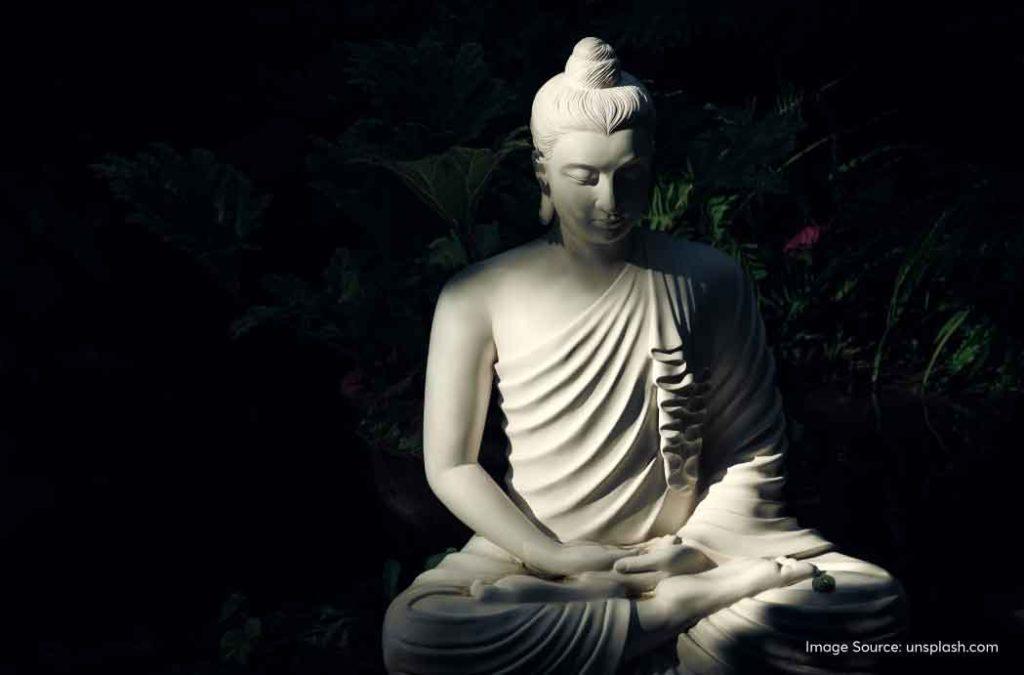
Several Buddha teachings sutras, articles and guided meditation classes are available on the Internet. It is possible to use these resources wisely and widen our knowledge about Buddhism. The celebrations and rituals that will be conducted in Mahabodhi temple, Bodh Gaya, can also be accessed online through a live stream on YouTube. It feels like you are right there with those monks and this is a great way to stay connected if you are not able to physically make it to the shrine.
In a fast-paced world where cut-throat competition is believed to help people attain new heights, it is very important to understand the beauty of life and the art of staying unattached. Lord Buddha’s teachings tell us the importance of love, togetherness, kindness, mindfulness and harmonious relationships. These are the secret recipes to a peaceful time on Earth, to complete the karmic cycle and reach a state of accomplishment.
On this Buddha Purnima, let us revisit our words and actions and start to live a life that takes us toward inner transformation and eternal liberation. Happy Buddha Purnima!







